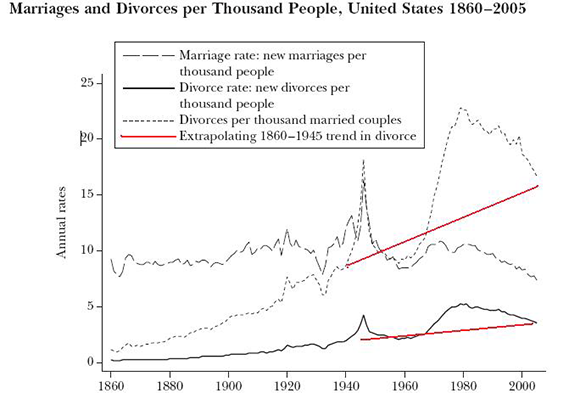One of the themes of neoreaction is that different groups of people will naturally evolve different forms of government and a government that is optimal for one group may fail when applied to another.
For example, anarcho-monarchism may be right for the anglosphere, but would likely fail outside of the natural institutions and culture that have evolved within the anglosphere.
As Bryce puts it:
The insight of neoreaction, contrasting this, is that the differences between groups do significantly determine the optimal form of governance. To different groups, different political doctrines. Insofar as different treatment of groups is institutionalized, it tends to be institutionalized in respect of the differences those groups. A different group of people calls for a difference in evaluation. This will not and in most cases should not be simplistic, but again, the most optimal forms of evaluation are not going to be able to be wielded by every society.
If national groups require differing forms of government would not regional, or local groups require the same. Two different counties, towns, or even neighbourhoods may have different optimal forms of government.
Because of this the principle of subsidiarity fits naturally within neoreaction:
One of the key principles of Catholic social thought is known as the principle of subsidiarity. This tenet holds that nothing should be done by a larger and more complex organization which can be done as well by a smaller and simpler organization. In other words, any activity which can be performed by a more decentralized entity should be. This principle is a bulwark of limited government and personal freedom. It conflicts with the passion for centralization and bureaucracy characteristic of the Welfare State.
Subsidiarity is often a basic and explicit principle of reaction, particularly Catholic reaction, but in neoreaction it tends to be implicitly accepted but not formally acknowledged. For example, Moldbug’s patchwork is inherently subsidiaritist in nature, but I do not remember coming across him explicitly promoting the principle. Searching google for neoreaction and subsidiarity, bring up mostly Nick Steves‘ comments and a bit of Bryce’s work, as would be expected.
The primary purpose of this post is to make more encourage neoreactionaries to pay more explicit attention to, what I believe to be, an underlying principle of neoreaction, subsidiarity.
****
From this, a reactionary basis for libertarianism or anarchism can be reached. Rather than basing libertarian thought around such things as non-existent human rights, libertarian thought can be derived from the subsidiarity principle.
The individual is the smallest and simplest human organization possible. If everything is to be governed by the smallest and simplest organization capable and an individual is capable of governing itself, it stands to reason that libertarianism is the optimal form of governance.
The problem with this formulation is that not all individuals are capable of governing themselves. Natural slaves, those constitutionally incapable of governing themselves, present a challenge to this form of organization.
Thus we come back to the original theme, different groups of people will have differing optimal forms of governance.
In a society with few, if any, natural slaves, anarcho-monarchism would be the optimal form of government. Most people could govern themselves, the presence of a king would ensure his citizenry refrained from trying to govern each other, and the few natural slaves could easily be cared for through private, charitable organizations.
Thus, for Englishmen, a self-reliant people used to freedom and self-organization with strong natural social institutions, anarcho-monarchism is the optimal form of governance.
For other peoples, with a higher proportion of natural slaves, other more restrictive forms of governance may be necessary.
****
From this we can also discern a factor in why the size and power of government has increased while the non-English population has increased.
As non-English populations have been imported into English countries, the proportion of natural slaves have increased. More natural slaves necessitates more governance.
Thus, immigration from countries where the populations lack English virtues of self-reliance, spontaneous self-organization, and freedom will necessarily lead to more governance.
This is but one reason why immigration, particularly from incompatible cultures, should be severely restricted.
****
We now come to the post that inspired this post, a Town without Big Corporations:
There is no question in my mind that this town has saved itself from eventual decline. Not only is it much less ugly and depressing than nearby towns with chain stores but one has the sense that the people who live there identify with it as a community and feel some loyalty and pride. I say that based on my experiences simply talking and listening to the people who live there. So even if it allowed chains, but restricted their garish signs, the town would be worse off.
Instead of a Pizza Hut, there are individually-owned pizza restaurants and a couple of young entrepreneurs take a traveling wood-burning oven to the farmer’s market. People raise goats, sheep and chickens and sell the meat. There are a number of cheese makers who seem to do reasonably well and who sell things immeasurably superior to corporate cheese.
According to free market radicals, this town is engaging in practices that are fundamentally wrong. It is engaging in explicit protectionism in favor of small businesses. Or free market radicals will say that it’s okay to do this kind of thing here and there on a small scale, but the underlying principle of restricting commerce is immoral and tyrannical.
First, Laura is simply incorrect, but incorrect in an understandable way that almost every person is incorrect today.
The free market and large corporations are not one and the same. In fact, corporations, particularly limited liability joint-stock corporations, are a government-manufactured and -enabled institution that distorts the free market. The corporate takeover of the Anglosphere is not a product of free markets, but rather another government intrusion into the private lives of English citizens.
While I can’t say with utmost certainty, but removing the government-created, limited liability, joint-stock corporations from the free market would most likely halt the corporate takeover of the Anglosphere. How many would be willing to become involved in a world-spanning enterprise and be held responsible for the entirity of what the organization does?
Neoreactionaries should oppose the corporate system, as they are another failing of modernism.
Aside from that though, as a free market reactionary, the free market is the most efficient method of wealth-production in almost all cases; this is historically unarguable.
But wealth-creation efficiency is not the end of society; different peoples may have differing goals for society.
In societies without the basic levels of common trust, neutral courts, and non-corrupt government found within the Anglosphere, the free market may not function at all and/or what may be called a “free market” may be nothing of the sort and may actively harm people.
In the Anglosphere, I would not oppose economic regulation by the king, but I would oppose any regulation by our current democratic, national governments. Almost all economic regulation in our national democracies is created for the good of the state-created corporations, and almost all work against the independent entrepreneur.
Not to mention national regulation thoroughly violates the principle of subsidiarity.
On the local level though, local communities should be free to regulate commerce as they wish. Our social institutions have been annihilated by modern progressivism; some local regulations over commerce should be fine until the English people reassert their historical freedoms under the king.




